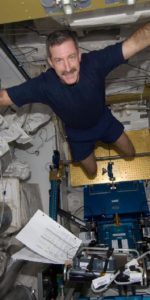
WASHINGTON — NASA has received the National Research Council (NRC) report “NASA Space Technology Roadmaps and Priorities,” which provides the agency with findings and recommendations on where best to invest in technologies needed to enable NASA’s future missions in space. The NRC report will help define NASA’s technology development priorities in the years to come.
One year ago, NASA provided 14 draft space technology area roadmaps to the NRC and asked the council to examine and prioritize technologies for the agency. The technologies were prioritized in each of the 14 areas and then across all categories.
The report finalizes the NRC’s review and identifies 16 top-priority technologies necessary for NASA’s future missions, which also could benefit American aerospace industries and the nation. The 16 were chosen by the NRC from its own ranking of 83 high-priority
technologies out of approximately 300 identified in the roadmaps.
“The report strongly reaffirms the vital importance of technology development to enable the agency’s future missions and grow the
nation’s new technology economy,” said Mason Peck, chief technologist at NASA Headquarters in Washington. “The report confirms the value of our technology development strategy to date. NASA currently invests in all of the highest-priority technologies and will study the report and adjust its investment portfolio as needed.”
The technology priorities the report identifies are aligned with NASA missions to extend and sustain human activities beyond low Earth orbit, explore the evolution of the solar system and the potential for life elsewhere, and expand our un¬derstanding of Earth and the universe in which we live.
The report observes that “technological breakthroughs have been the foundation of virtually every NASA success. In addition,
technological advances have yielded benefits far beyond space itself in down-to-Earth applications.” It also states “future U.S.
leadership in space requires a foundation of sustained technology advances.”
During the coming months, NASA’s Office of the Chief Technologist will lead an agency-wide analysis and coordination effort to update the 14 technology area roadmaps with the NRC report’s findings and recommendations.
To review a copy of the report, visit: http://www.nap.edu/topics.php?topic=293
For more information about NASA’s Space Technology Program, visit: http://www.nasa.gov/oct





